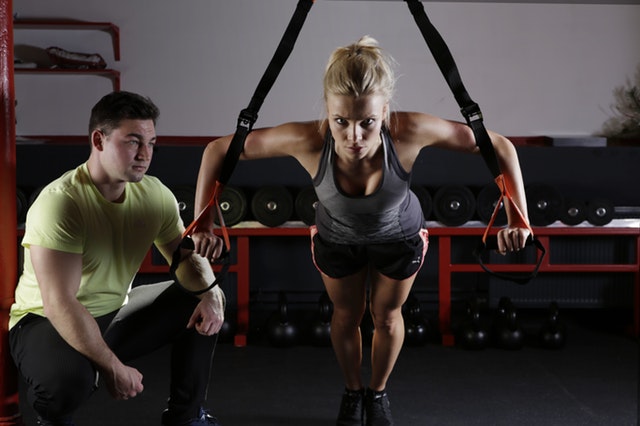This is the first installment of my PRISE® exercise training routine I introduced previously (see, “RISE Up!” and “Before and After”). As a reminder, “PRISE®” is my acronym for Protein, (P), Resistance (R), Interval (I), Stretching (S), and Endurance (E) training. Each routine is designed to target a specific health and fitness related component. Protein (P) intake is important throughout the day to keep metabolism revving, muscles nourished, and hunger pangs at bay.
Resistance training (R) has been shown to reduce belly fat and increase lean body mass (muscles) and lets you play like a kid again!
Interval training (I) is great for improving cardiovascular (heart) fitness, increasing metabolism (calorie burn), reducing body fat and increasing muscle mass.
Stretch training (S) is ideal for improving balance, muscle tone and flexibility, lowering blood sugar and enhancing mood.
Endurance (E) training is best for lowering blood pressure and increasing feelings of happiness, it’s a great “stress buster”.
In this blog, I will explain the “R”, or resistance training, component.
I recommend you perform each routine 1 day per week for a total of 4 days of exercise per week. However, after the first 4 weeks of starting feel free to choose one of the routines to perform a second time but I recommend not to exceed 5 days of exercise per week because your body needs time to recover, replenish, and rebuild. Always perform the dynamic warm-up before and a gentle cool-down after each session.
**Before engaging in any exercise program, please obtain medical clearance from your primary health care provider. Dr. Paul recommends that all physical exercise be performed properly and safely so you avoid injury and allow yourself to make the most health and physical performance benefits.
As a young (some would say, hyper-) active boy, my earliest memories of weight lifting and huge muscles were watching the early body building competitions with Arnold Schwarzenegger and the Rocky movies with Sylvester Stallone.
At the time, I figured lifting heavy weights was the best and only way to ‘grow big muscles’ and make me a better athlete. Unfortunately, many people still believe lifting weights is the only way to develop strength, muscle tone and bigger muscles.
However, this is simply not true. Many of the health benefits of typical weight-lifting, such as increased muscle size, tone, and strength, are more easily, safely and effectively achieved by not lifting any dumbbell or barbell weights at all, but instead performing functional ‘resistance exercise’.
Scientific research, including my own, shows that muscle strength, tone, size and performance may be enhanced by performing resistance exercises that use nothing more than a person’s body weight and possibly the addition of resistance bands and balls made of rubber along with a couple of weighted medicine balls.
In fact, you don’t need to go to a gym, lift heavy weights and grunt a lot to improve your muscle function. It’s as simple as using your own body weight plus a few extra pieces of light-weight and mobile fitness equipment.
Before I introduce some of these exercises it’s important to understand and appreciate why it’s important to perform resistance exercise in the first place.
Resistance exercise includes any physical movement that requires muscles to exert a force against a resistance causing the muscle cells (sometimes referred to as fibers) to contract and change length. Most resistance exercise results in shortening of muscle cells (concentric muscle contractions), such as a bicep curl, but some resistance exercises cause muscle cells to lengthen (eccentric muscle contractions), such as lowering a heavy weight. Lastly, a major component of my Resistance training is a type of muscle contraction called plyometrics. These are exercises that require the muscles to be rapidly stretched (“loaded”) and then immediately contracted, such as jumping off of a box onto the ground and then jumping onto another box (box jumping) or performing push-ups with a clap between them. The goal of plyometrics is to improve muscle power.
In either case, muscles respond favorably to resistance training by improving the conduction of nerve impulses to the muscle and repairing and rebuilding of new muscle, resulting in improved muscle tone, strength, and performance, and sometimes increased muscle size (called hypertrophy).
In addition to the many favorable changes to our muscles, our bones and joints respond favorably to resistance exercise, as well. For most people, this translates to ‘real-life’ by making them feel healthier, stronger, more fit, better able to accomplish tasks and activities of daily living, like climbing a flight of stairs or lifting heavy objects, like groceries and luggage.
In other words, people will often say they feel more efficient and are able to enjoy some of the same physical activities they once enjoyed as a child; things like walking on the beach, playing hide and seek, four-square, and volleyball, or throwing a Frisbee, etc.
As an athlete, the increase in muscle function results in improved explosive power, strength and agility which translates to improved athletic performance.
The resistance (R) exercise training program is a series of exercises that incorporate dynamic, functional resistance movements of footwork/agility drills; bodyweight exercises involving weighted medicine balls, physio-balls, and exercise tubes and bands; along with core strengthening exercises.
Each specific exercise is performed at a resistance to induce muscular fatigue in either 30 seconds or 15-20 repetitions for each set of exercises and a total of 3 sets are performed for each exercise with a 15 second recovery (or rest) period in between each set. A 60 second recovery is allowed between different exercises.
The routine is preceded and followed by a 5-10-minute dynamic warm-up and a gentle stretching cool-down, respectively (See my “Before and After” blog). Thus, the entire R is completed within 45-60 minutes.
As the training progresses, it’s important to increase the resistance and intensity of the exercises to increase strength and muscle performance. The great thing about the R routine is all the exercises are easy to perform using just your body weight or the use of light weight and transportable equipment so they can be performed in the home or the gym (See sample R routine below). For a complete listing of R exercises please visit www.priseprotocol.com and look for Dr. Paul’s PRISE Training Journal.
The R exercises may be easily modified for a persons’ level of fitness, including beginner, intermediate or advanced routines. For each R session:
-Choose 3 exercises in each category below:
Dynamic Warm-up (5-10 minutes)
Footwork & Agility (10 minutes)
Resistance with lower and upper body (20 minutes)
Core Strengthening (10 minutes)
Gentle Stretch Cool-down (5-10 minutes)
-Perform each exercise for 30 seconds followed by a 15 second recovery. Perform 3 sets of each exercise.
-A 60 second recovery is allowed between different exercises
-Cool down with a light walk/jog and gentle stretching
After Doing These Workouts, Get Ready to Play Like a Kid Again! This will give you an amazing total body workout in just 45-60 minutes!
Definitions:
Repetitions or “reps” = the number of times or the length of time you perform a given type of exercise or movement. For example, 30 second reps (or 15 reps) of push-ups would mean you would perform push-ups for 30 seconds (or do 15 of them), then take a short 15 second rest.
Sets = the number of times you perform those repetitions (time or number). Using the example above, 30 seconds of push-ups is considered 1 “set”. In most cases, I will suggest performing 3 sets of each exercise, so this would equal 3 sets of 30 second push-ups with a short 15 second recovery or rest in between each set. Following the completion of the 3 sets, you would rest for 60 seconds before your next exercise. The other option is to perform a set number of repetitions for an exercise for 3 sets. For example, perform 15 push-ups for 3 sets with a 15 second recovery in between each set.
Recovery = the time you take to recover in between “sets”. I recommend a 15 second recovery in between sets of the same exercise and 60 seconds in between different exercises. For example, in between your 1st and 2nd, and 2nd and 3rd set of push-ups take a short 15 second recovery. But, after finishing your 3rd set of push-ups and before you begin your next exercise, say pull-ups, then you would take a full 60 second recovery. You should spend your time “recovering” walking in place or around your exercise space at a slow, comfortable pace, but feel free to sit down if needed.


